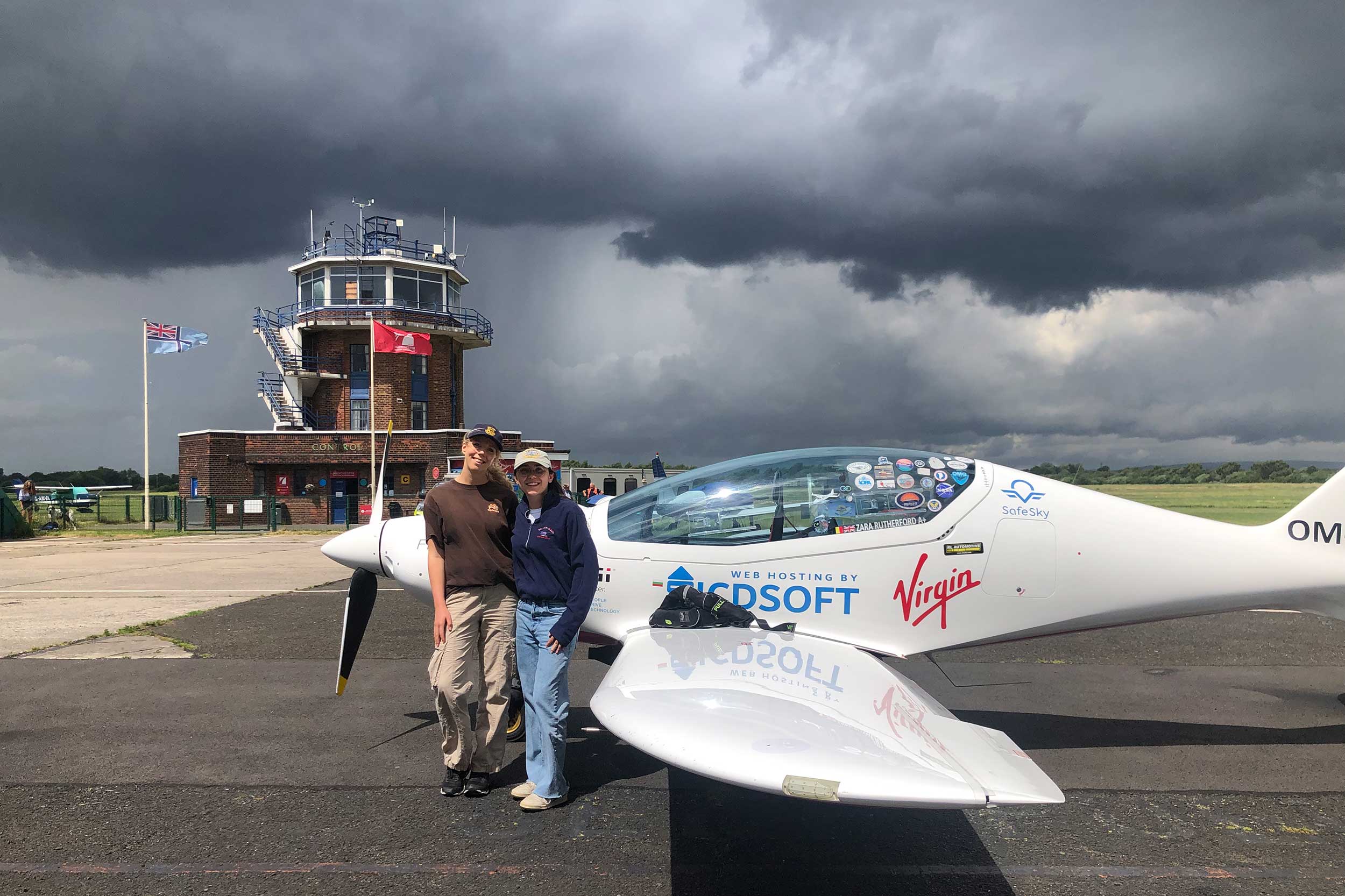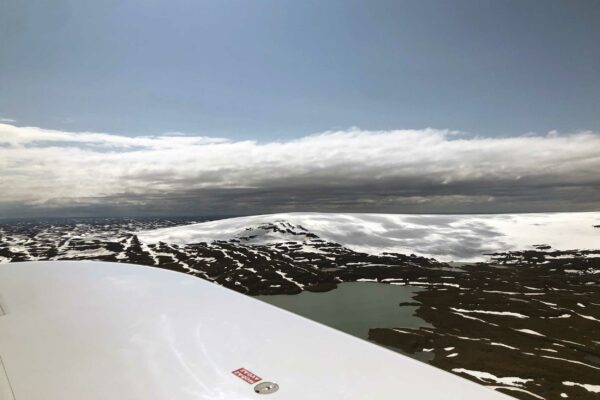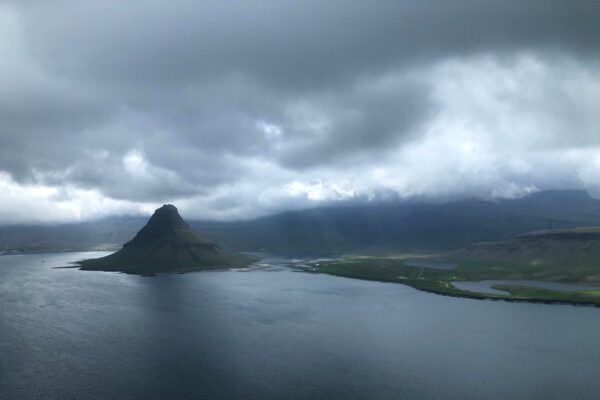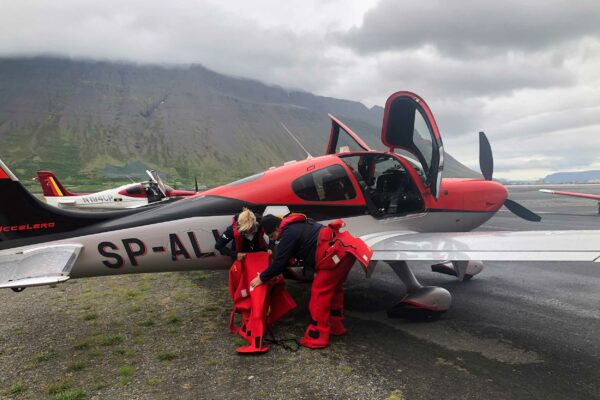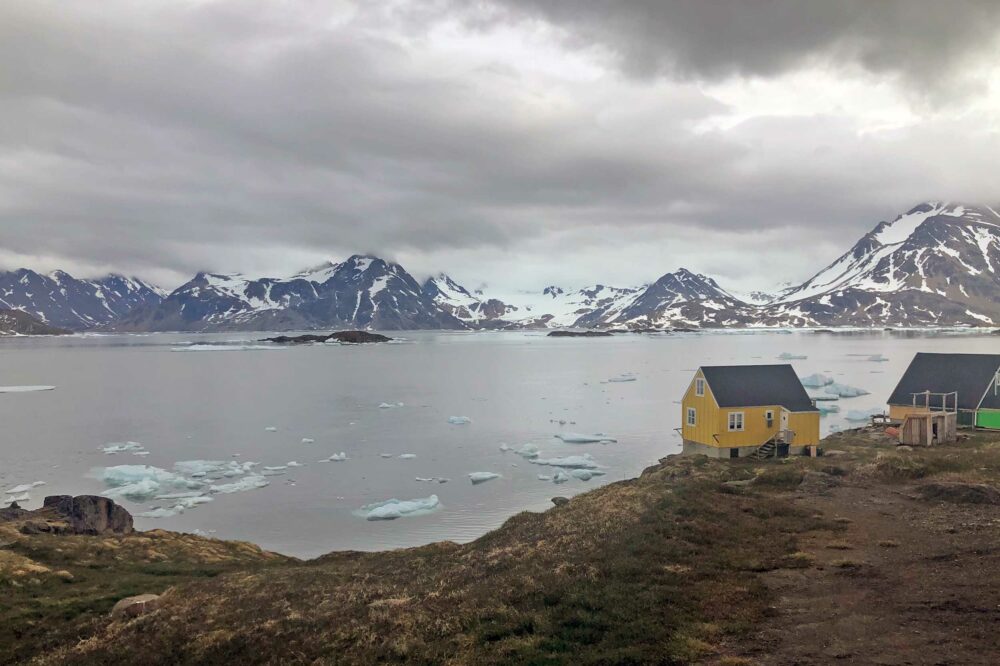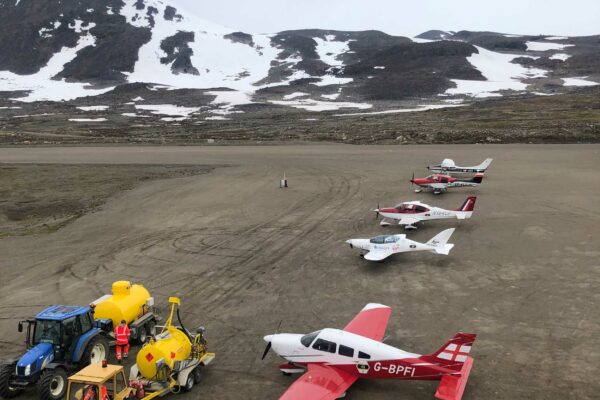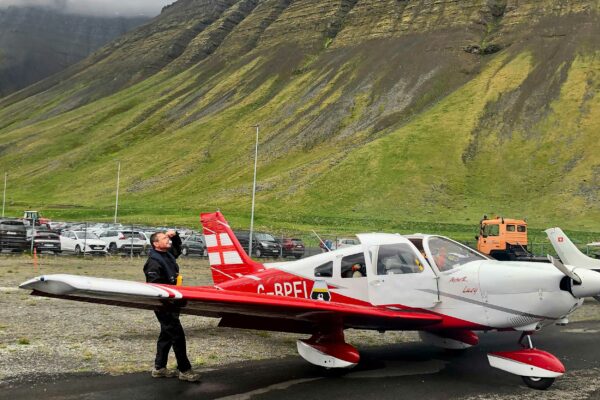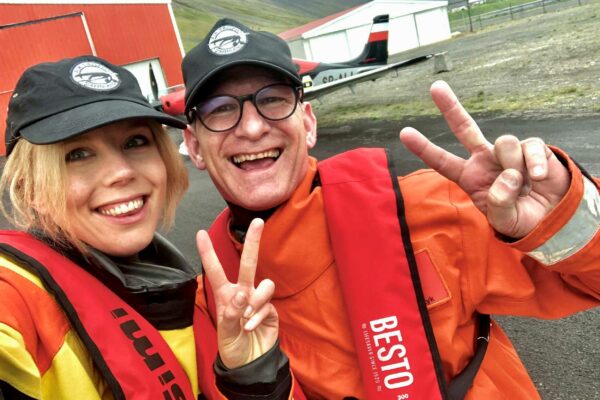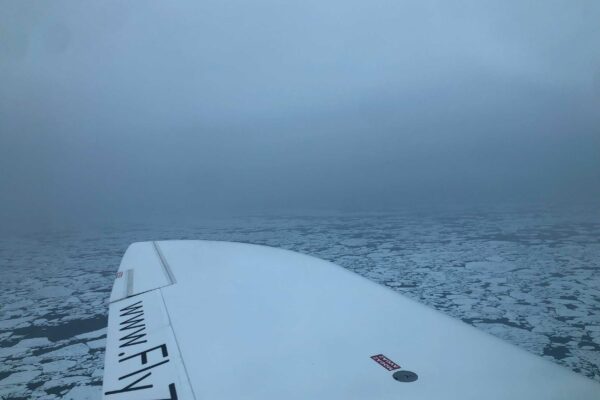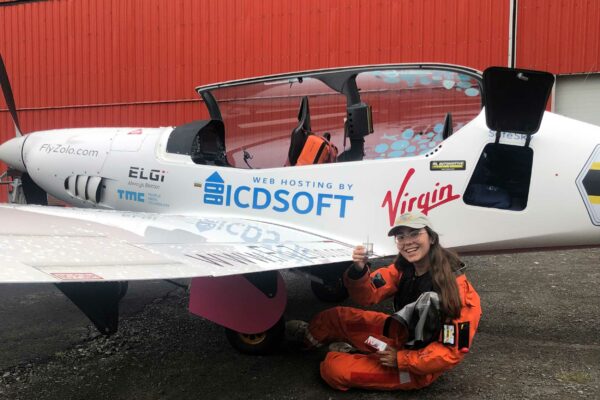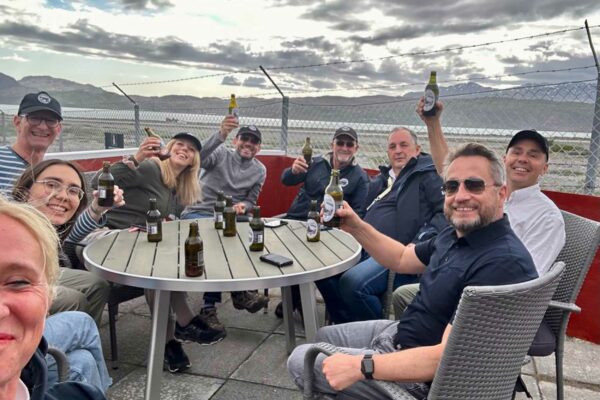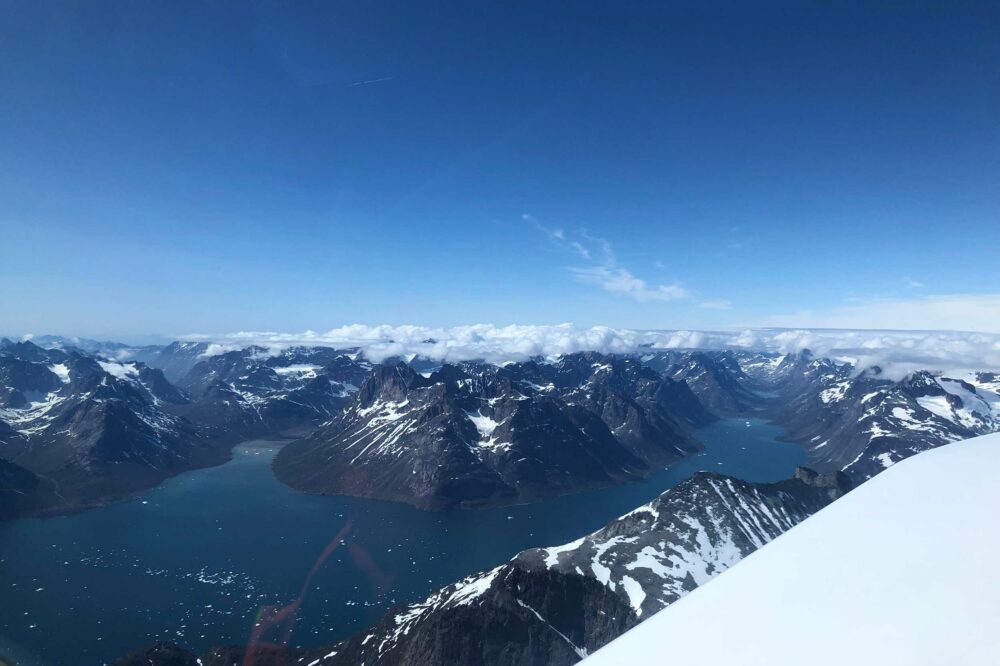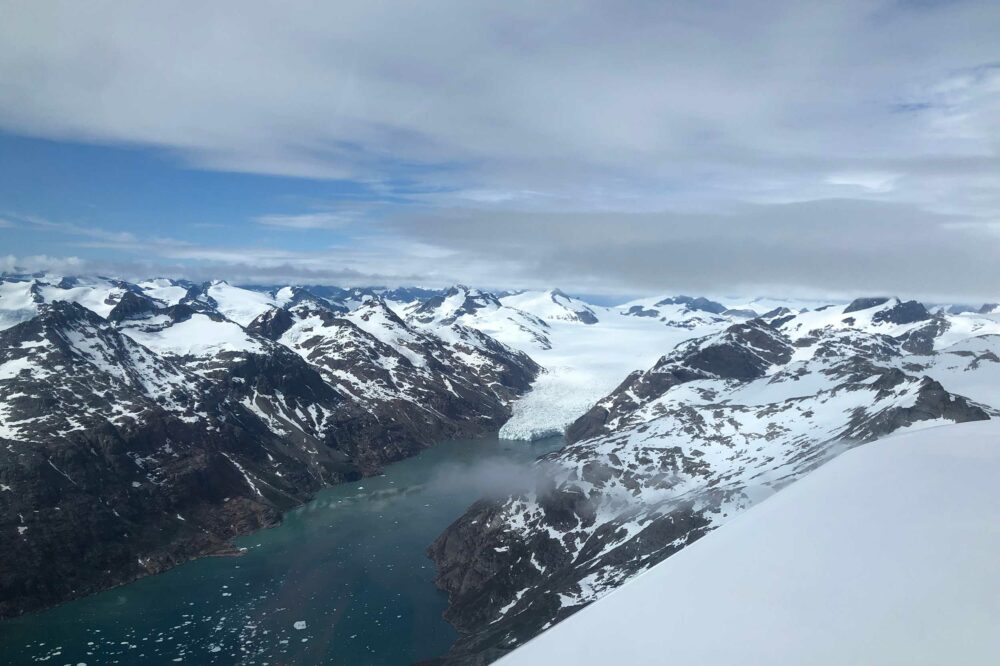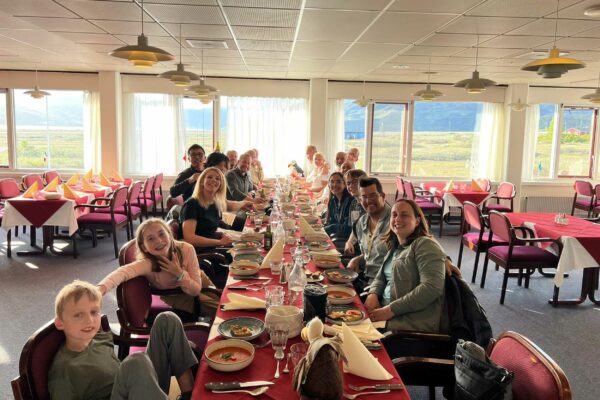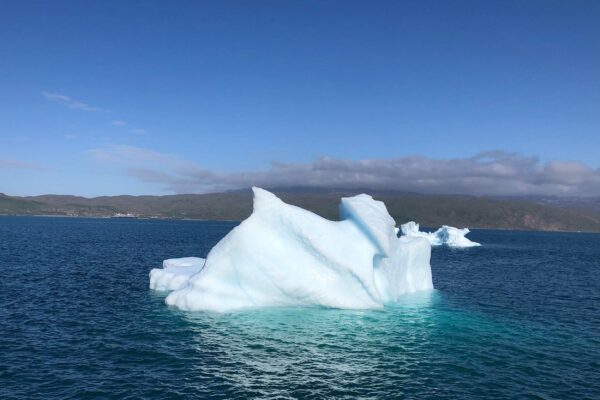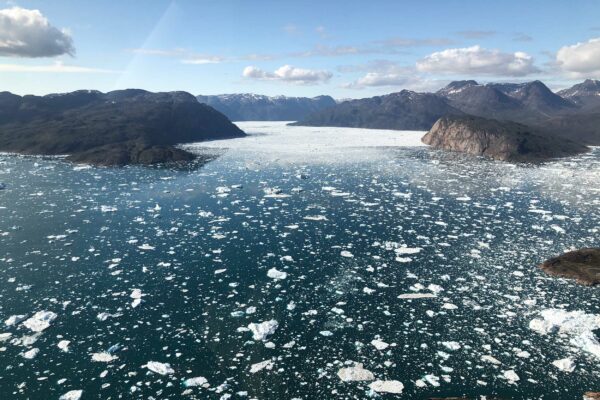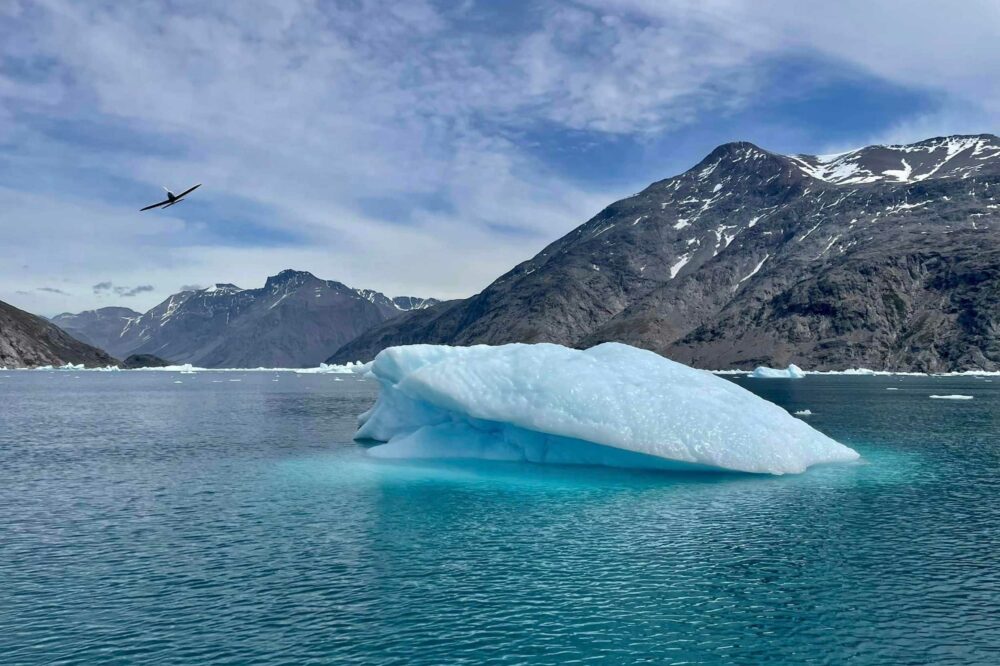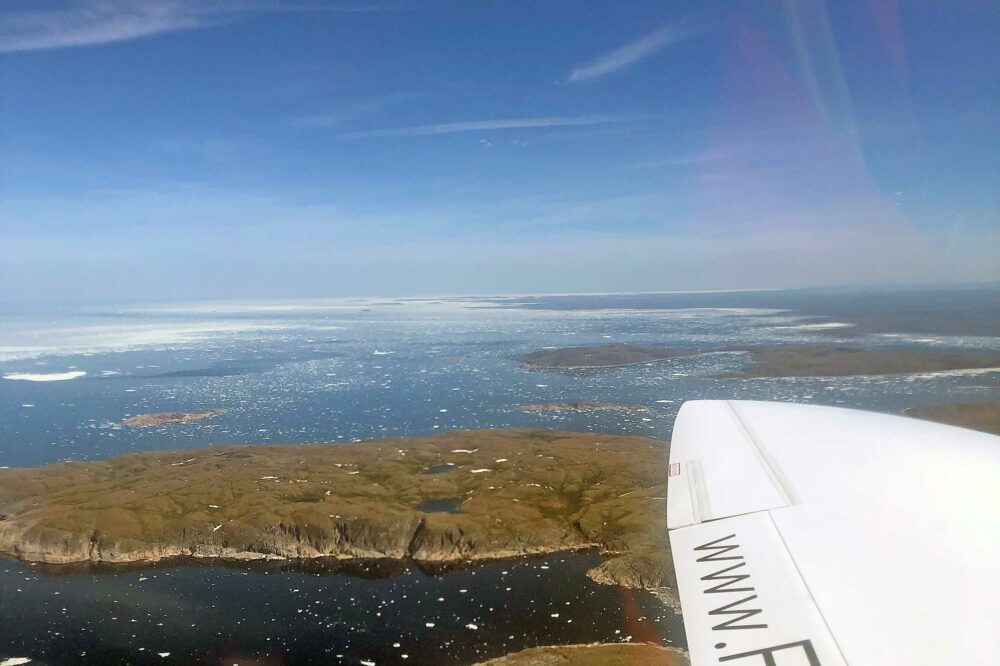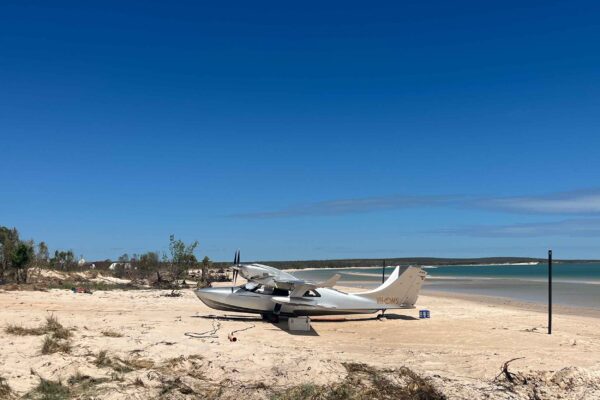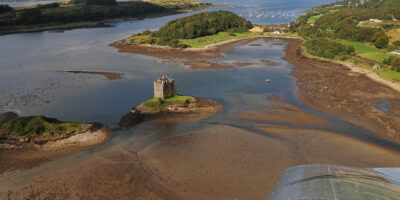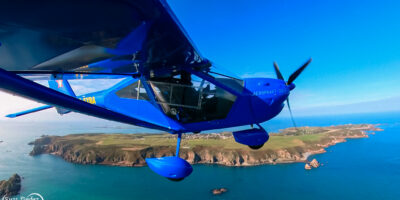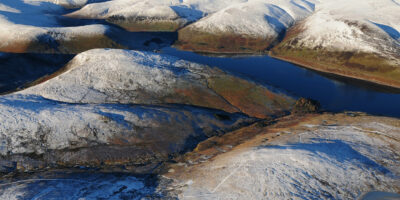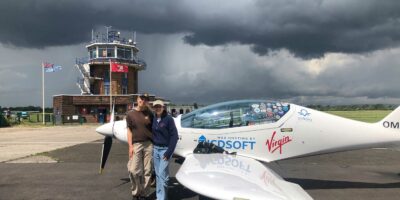There is, however, an option to shave a little time off the journey – you can cut the corner and go over the ice cap – an unimaginably vast sheet of ice covering the middle of Greenland, rising to over 8,000ft above sea level (asl).
The temperatures are sub-zero, so even the IFR-capable aircraft need to be able to remain clear of cloud at 9,000ft to safely pass. To deduce whether this will be possible, we head up to the tower for weather charts and reports from Nuuk, the main meteorological office.
Cirrus deicing equipment
They tell us they think today is a pretty good day to go over the cap, but we spot low clouds and potential precipitation half-way down the coast. Tomorrow’s weather looks much less promising, so the two Cirrus aircraft, equipped with their deicing systems, decide to make a go of it.
The rest of us aren’t willing to accept the icing risk, so we wave them off and watch their progress as we head to the hotel, happy when we see them arrive safely.
I wake up the next morning expecting a leisurely day exploring the surrounding area, but Duncan has other ideas. I find him talking to the rest of the team.
“We’ve got a window early afternoon, and I think we should go for it. Narsarsuaq is lovely all day and we’re likely to have blue skies over the ice cap.”
“Zara and I can go first and report back,” I offer, “We’ve got the endurance to go look at the ice cap, decide it’s a no-go, and come back if we need to. If we’re ahead, reporting back, Steve and Martin will be able to make their decision before their point of no return.”
The plan is agreed, and so after an impromptu but illuminating tour of the town by Jakob, the hotel owner, we are dropped at the airport. Zara and I take one last look at the weather and leave.
Instead of taking the most direct track, we elect to hug the coast. For the first hour or so this seems like a good idea, but then a large bank of cloud appears up ahead.
With no choice but to go underneath it, we are pushed to 1,000ft… 700ft… 500ft… it starts to drizzle, the temperature dropping gradually and, when it hits 2°, we decide to turn back. We use our callsign to radio through to the others our decision.
“Trophy 21, Trophy 54, we’re turning back due low cloud and icing risk.”
“Roger,” comes Duncan’s reply, “We are between cloud layers and it seems tricky but manageable. We’ll keep going and can report back for Steve and Martin. Trophy 21.”


